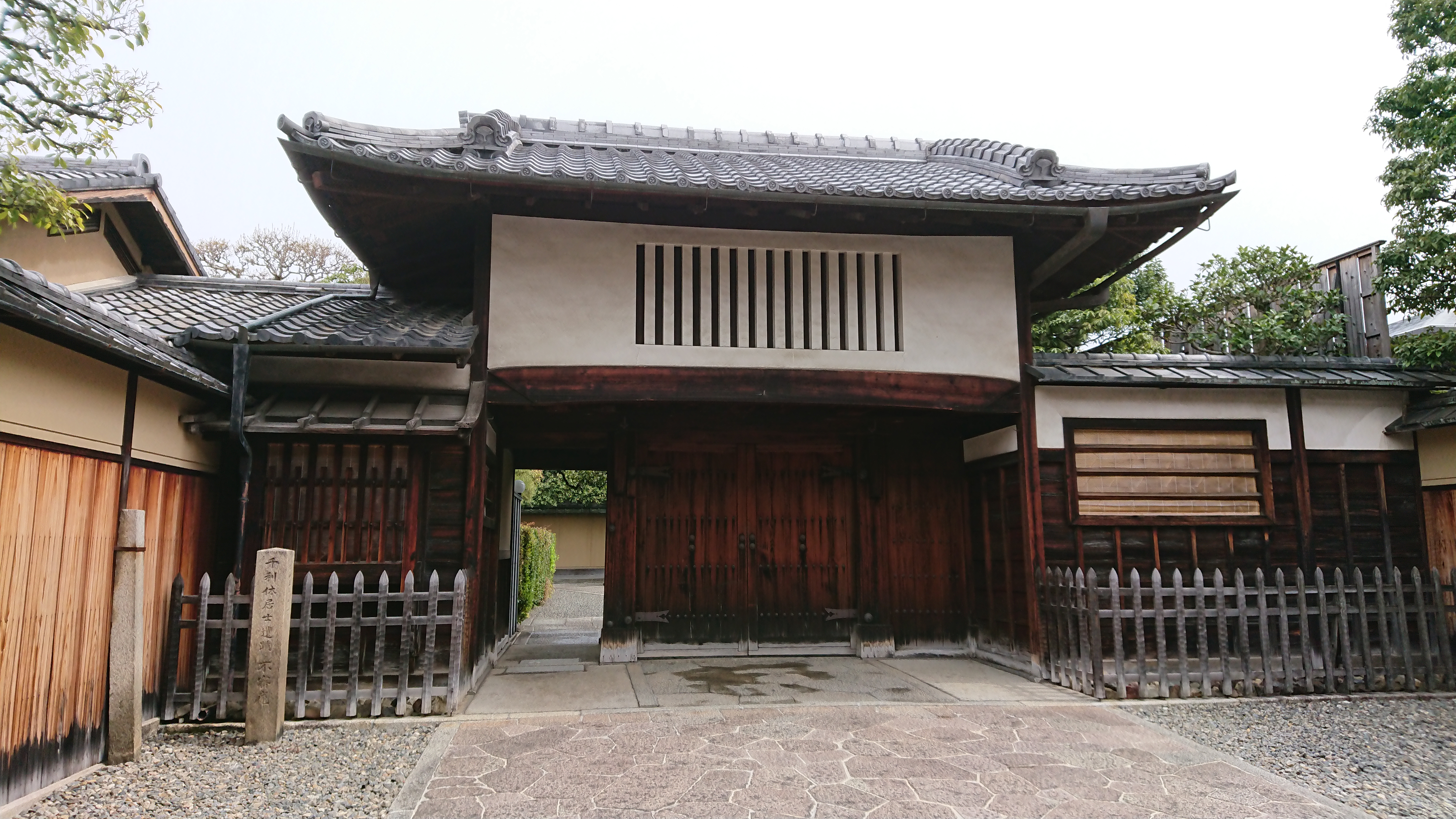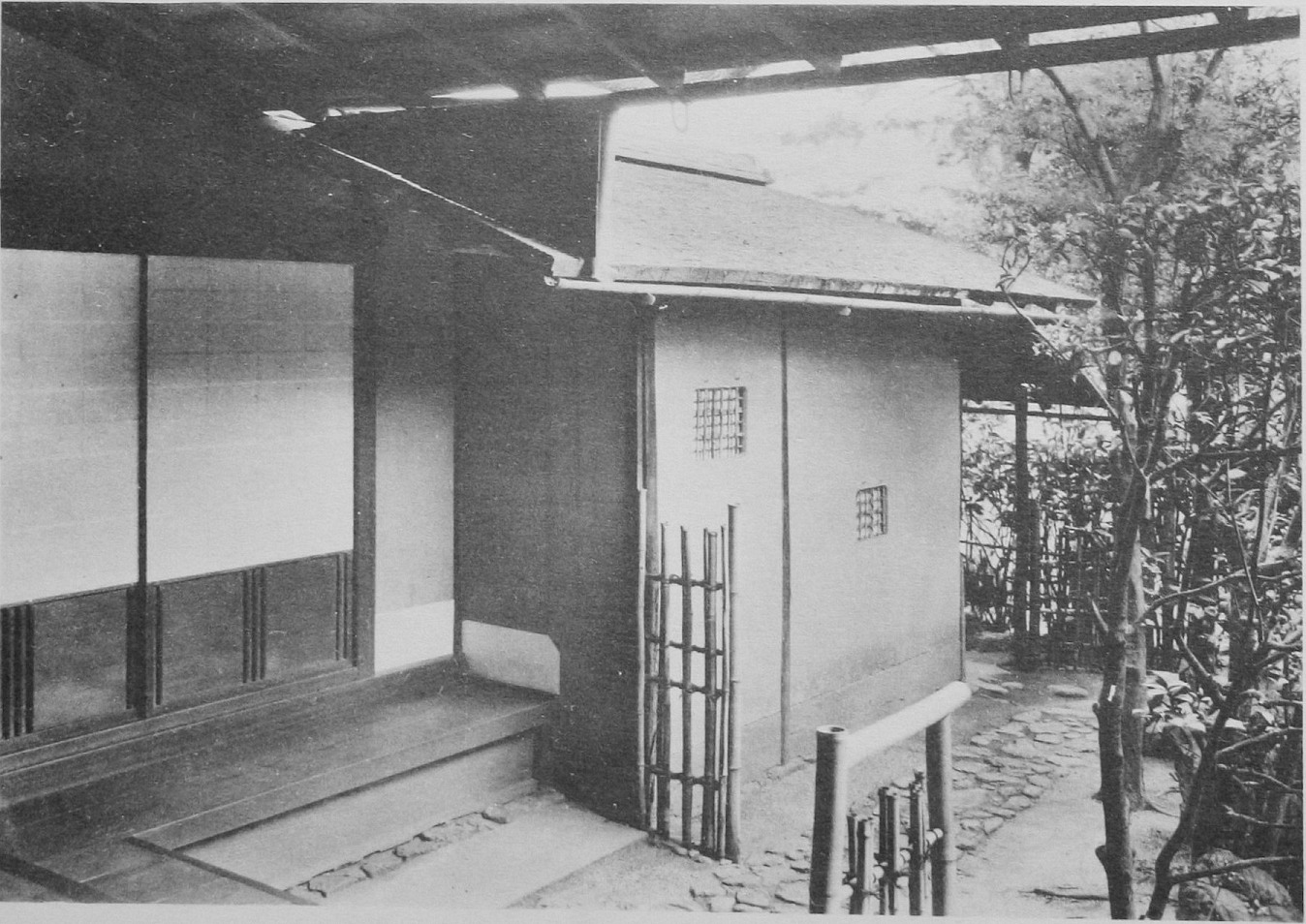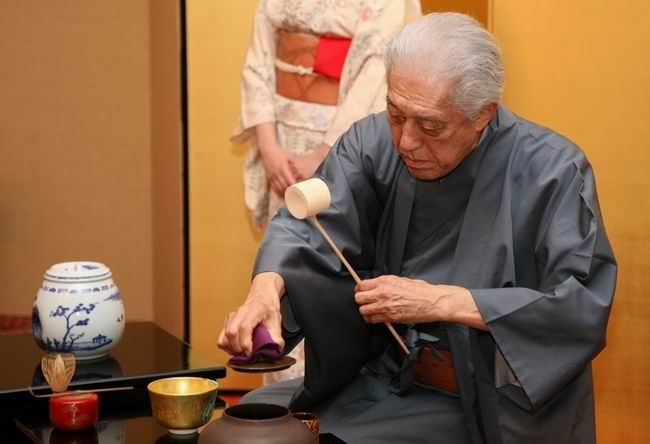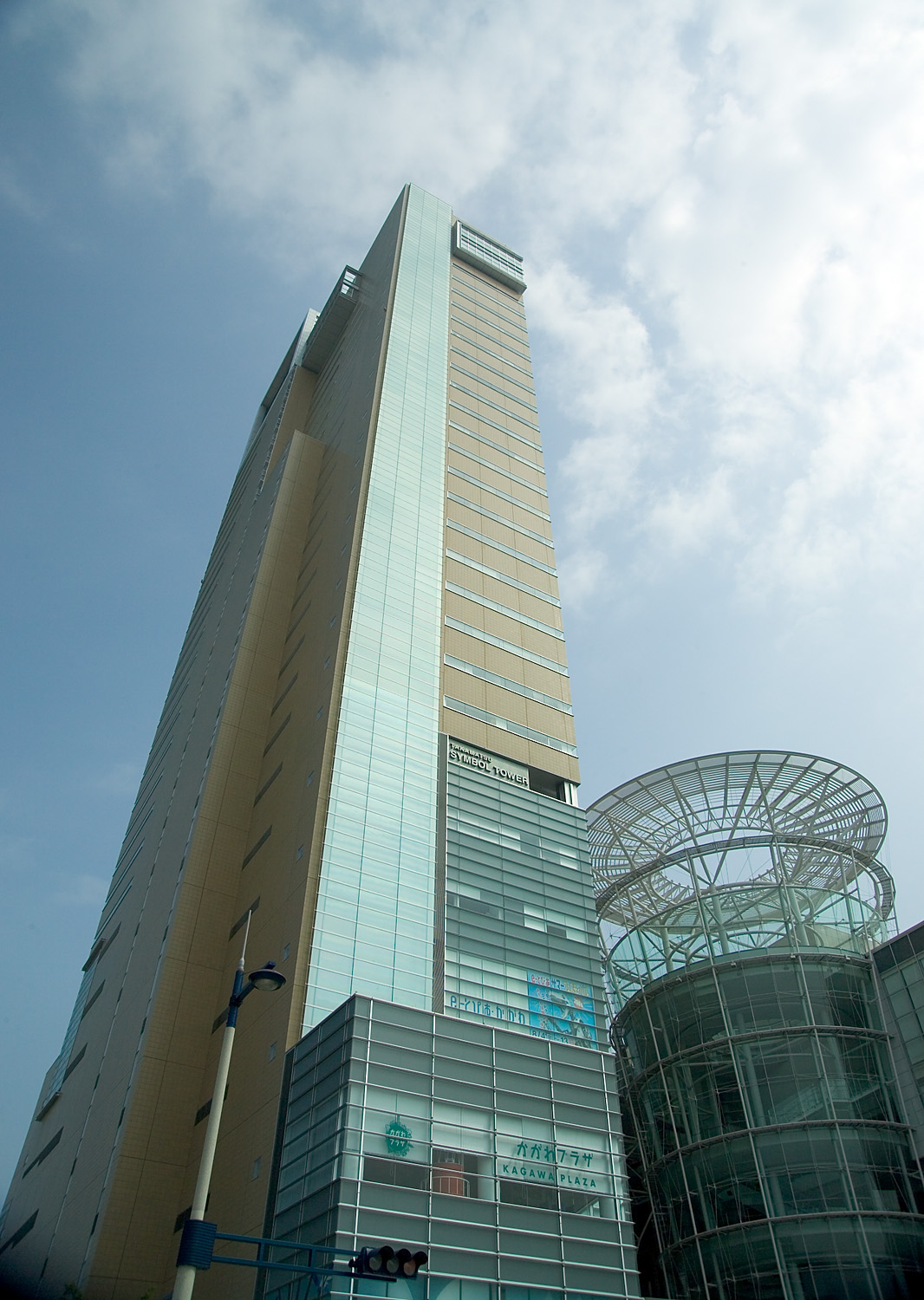|
Mushakōjisenke
, sometimes referred to as ''Mushanokōjisenke'', is one of the schools of Japanese tea ceremony. Along with Urasenke and Omotesenke, the Mushakōjisenke is one of the three lines of the Sen family descending from Sen no Rikyū, which together are known as the san-Senke or "three Sen houses/families" (三千家). The head or ''iemoto'' of this line carries the hereditary name Sōshu (宗守). History Mushakōjisenke is associated with Sen no Rikyū's great-grandson , who was the second to the oldest of Sen no Sōtan's four sons. Like his older brother, he was Sōtan's son by Sōtan's first wife, and through much of his life he lived apart from the Sen house. During this time, he became a lacquer artisan. At the behest of his younger brothers, however, he set up his own tea house, called the Kankyū-an, on Mushakōji street, and became devoted to practicing and teaching the Way of Tea."Senke to Kankyū-an no rekishi" iMushakōjisenke official website Accessed August 8, 2008. ... [...More Info...] [...Related Items...] OR: [Wikipedia] [Google] [Baidu] |
Schools Of Japanese Tea Ceremony
"Schools of Japanese tea" refers to the various lines or "streams" of Japanese tea ceremony. The word "schools" here is an English rendering of the Japanese term . There are three historical households () dedicated to developing and teaching the style of tea ceremony developed by Sen no Rikyū, the 16th century tea master whom they are directly descended. They are known collectively as the , and consist of the Omotesenke, Urasenke, and Mushakōjisenke schools of tea. Another line, which was located in Sakai and therefore called the , was also descended from the original (Sen house). Rikyū's natural son, Sen no Dōan, took over as head of the Sakaisenke after his father's death, but the Sakaisenke soon disappeared as Dōan had no offspring or successor. The school named is not descended by blood from the Sen family; its founder, Kawakami Fuhaku (1716–1807), became a tea master under the 7th generation head of the Omotesenke line, and eventually set up a tea house in Edo (Tok ... [...More Info...] [...Related Items...] OR: [Wikipedia] [Google] [Baidu] |
Urasenke
is one of the main schools of Japanese tea ceremony. Along with and , it is one of the three lines of the family descending from , which together are known as the - or the "three houses/families" (). The name , literally meaning "rear house/family", came into existence due to the location of the homestead of this line of the family in relation to what was originally the frontmost house (the ) of the estate. The other main schools of Japanese tea ceremony, and , also follow this naming convention, with the former meaning "front house/family", and the latter derived from the street name of the family's homestead, . History The three houses derive from descendants of , who was active during the period and is the most historically important figure within Japanese tea ceremony. 's hometown was , in the province of (in present-day Osaka prefecture). However, as his activities became centered in Kyoto, he kept a house in Kyoto. He also had his adopted son-in-law, , who was ... [...More Info...] [...Related Items...] OR: [Wikipedia] [Google] [Baidu] |
Omotesenke
Omotesenke (表千家) is one of the schools of Japanese tea ceremony. Along with Urasenke and Mushakōjisenke, it is one of the three lines of the Sen family descending from Sen no Rikyū, which together are known as the san-Senke or "three Sen houses/families" (三千家). The name "Omotesenke", literally meaning "front Sen house/family," came into being as a natural occurrence, because of the location of the homestead of this line of the family in relation to that of the line of the family at what originally was the rear (ura) of the Sen estate. The name "Mushakōjisenke" for the other of the three lines of the family derives from the fact that the family's homestead is located along Mushakōji street. History The Omotesenke estate, known by the name of its representative tea room, the "Fushin-an" (不審庵), was where Sen no Rikyū's son-in-law, Sen Shōan, reestablished the Kyoto Kyoto (; Japanese: , ''Kyōto'' ), officially , is the capital city of Kyoto Prefect ... [...More Info...] [...Related Items...] OR: [Wikipedia] [Google] [Baidu] |
Sen No Rikyū
, also known simply as Rikyū, is considered the historical figure with the most profound influence on ''chanoyu,'' the Japanese "Way of Tea", particularly the tradition of '' wabi-cha''. He was also the first to emphasize several key aspects of the ceremony, including rustic simplicity, directness of approach and honesty of self. Originating from the Sengoku period and the Azuchi–Momoyama period, these aspects of the tea ceremony persist. Rikyū is known by many names; for consistency, he will be referred to as Rikyū in this article. There are three '' iemoto'' ('' sōke''), or 'head houses' of the Japanese Way of Tea, that are directly descended from Rikyū: the Omotesenke, Urasenke, and Mushakōjisenke, all three of which are dedicated to passing forward the teachings of their mutual family founder, Rikyū. Early life Rikyū was born in Sakai in present-day Osaka Prefecture. His father was a warehouse owner named , who later in life also used the family name Sen, a ... [...More Info...] [...Related Items...] OR: [Wikipedia] [Google] [Baidu] |
Sen No Sōtan
(1578–1658), also known as Genpaku Sōtan 元伯宗旦, was the grandson of the famed figure in Japanese cultural history, Sen no Rikyū. He is remembered as Rikyū's third-generation successor in Kyoto through whose efforts and by whose very being, as the blood-descendant of Rikyū, the ideals and style of Japanese tea ceremony proposed by Rikyū were able to be passed forward by the family. Biography He was the son of Sen Shōan and Okame, a daughter of Rikyū, and is counted as the third generation in the three lines of the Sen family known together as the ''san-Senke'' (see Schools of Japanese tea ceremony). He helped to popularize tea in Japan. It was in the generation of his children, Sōsa, Sōshitsu and Sōshu, that the three lines of the family—the Omotesenke, Urasenke and Mushakōjisenke—were established, with these three sons, respectively, as their heads of house. They are counted as the fourth generation in the respective lines. He had the original tea ho ... [...More Info...] [...Related Items...] OR: [Wikipedia] [Google] [Baidu] |
MOA Museum Of Art 2018 (002)
Moa are extinct giant flightless birds native to New Zealand. The term has also come to be used for chicken in many Polynesian cultures and is found in the names of many chicken recipes, such as Kale moa and Moa Samoa. Moa or MOA may also refer to: People * Moa (name) * Mohammed Abdellaoue (born 1985), Norwegian football player nicknamed "Moa" * Moa Lignell (born 1994), Swedish singer * Moa Kikuchi (菊地 最愛 Kikuchi Moa, born July 4, 1999), a Japanese idol, singer, and model. Places ;Islands * Moa (Indonesia), one of the Leti Islands * Moa Island (Queensland), in Australia ;Malls * Mall of Alnor, in Maguindanao, Philippines * Mall of America, in Minnesota, United States * SM Mall of Asia, in Manila, Philippines ;Rivers * Moa River, in west Africa * Moa River (Brazil) * Moa River (Cuba) ;Towns and villages * Moa, Cuba * Moa, Niger * Moa, Mkinga District, in Tanga Region, Tanzania Ship of the New Zealand Navy * ''Moa'' class patrol boat, built between 1978 and 19 ... [...More Info...] [...Related Items...] OR: [Wikipedia] [Google] [Baidu] |
Iemoto
is a Japanese term used to refer to the founder or current Grand Master of a certain school of traditional Japanese art. It is used synonymously with the term when it refers to the family or house that the iemoto is head of and represents. The word is also used to describe a system of familial generations in traditional Japanese arts such as tea ceremony (including ), , Noh, calligraphy, traditional Japanese dance, traditional Japanese music, the Japanese art of incense appreciation (), and Japanese martial arts. and Go once used the system as well. The system is characterized by a hierarchical structure and the supreme authority of the , who has inherited the secret traditions of the school from the previous . Titles An may be addressed by the title or , or by the title or . In English, is often translated as "Grand Master". The 's main roles are to lead the school and protect its traditions, to be the final authority on matters concerning the school, to issue or ... [...More Info...] [...Related Items...] OR: [Wikipedia] [Google] [Baidu] |
Matsudaira
The was a Japanese samurai clan that descended from the Minamoto clan. It originated in and took its name from Matsudaira village, in Mikawa Province (modern-day Aichi Prefecture). During the Sengoku period, the chieftain of the main line of the Matsudaira clan, Matsudaira Motoyasu became a powerful regional daimyo under Oda Nobunaga and Toyotomi Hideyoshi and changed his name to Tokugawa Ieyasu. He subsequently seized power as the first shōgun of the Tokugawa shogunate which ruled Japan during the Edo period until the Meiji restoration of 1868. Under the Tokugawa shogunate, many cadet branches of the clan retained the Matsudaira surname, and numerous new branches were formed in the decades after Ieyasu. Some of those branches were also of ''daimyō'' status. After the Meiji Restoration and the abolition of the ''han'' system, the Tokugawa and Matsudaira clans became part of the new nobility. Origins The Matsudaira clan originated in Mikawa Province. Its origins are unc ... [...More Info...] [...Related Items...] OR: [Wikipedia] [Google] [Baidu] |
Takamatsu, Kagawa
270px, Takamatsu City Hall 270px, Aerial view of Takamatsu city center 270px, View from Yashima to Takashima port is a city located in Kagawa Prefecture, Japan. , the city had an estimated population of 414,134 in 190120 households and a population density of 1100 persons per km². The total area of the city is . It is the capital city of the prefecture. Geography Takamatsu is located in central Kagawa Prefecture on the island of Shikoku. The city is located in the Takamatsu Plain, which is part of the Sanuki Plain, and is occupied by a gentle slope as a whole. The northern part faces the Seto Inland Sea, forming a semicircular urban area centered on Takamatsu Port and Takamatsu New Port (commonly known as Shinminato).The western part of the city consists of an alluvial fan formed by the sedimentation of the Koto River. The eastern part is a flooded plain formed by the Kasuga River and Shinkawa River. In the northeastern part of the island, there is Yashima, a table-shape ... [...More Info...] [...Related Items...] OR: [Wikipedia] [Google] [Baidu] |
Sanuki Province
was a province of Japan in the area of northeastern Shikoku. Nussbaum, Louis-Frédéric. (2005). "''Sanuki''" in . Sanuki bordered on Awa to the south, and Iyo to the west. Its abbreviated form name was . In terms of the Gokishichidō system, Sanuki was one of the provinces of the Nankaidō circuit. Under the ''Engishiki'' classification system, Sanuki was ranked as one of the "upper countries" (上国) in terms of importance, and one of the "middle countries" (中国) in terms of distance from the capital. The provincial capital was located in what is now the city of Sakaide, but its exact location was only identified in 2012. The ''ichinomiya'' of the province is the Tamura jinja located on the city of Takamatsu. retrieved 2011-08-09 < ... [...More Info...] [...Related Items...] OR: [Wikipedia] [Google] [Baidu] |
Shōan Sōjun
is an era in Japanese history. This era spanned the years from April 1299 through November 1302. Preceding it was the Einin era, and following it was the Kengen era. The reigning emperors were and . Change of era * 1299 : The new era name was created to mark an event or a number of events. The previous era ended and a new one commenced in ''Einin'' 7. Events of the ''Shōan'' era * November 1, 1299 (''Shōan 1, 8th day of the 10th month''): Chinese Chan master Yishan Yining arrived in Kamakura as a last Mongol envoy. * March 2, 1301 (''Shōan 3, 21st day of the 1st month''): In the 5th year of Go-Fushimi''-tennō''s reign (後伏見天皇5年), the emperor was forced to abdicate; and the succession (‘‘senso’’) was received by his cousin. Shortly thereafter, Emperor Go-Nijō is said to have acceded to the throne (‘‘sokui’’). * 1301 (''Shōan 3''): ''Gokenho'', a Buddhist text was printed. * 1302 (''Shōan 4''): Eikan-dō Zenrin-ji mandala is said to have been ... [...More Info...] [...Related Items...] OR: [Wikipedia] [Google] [Baidu] |
.jpg)




